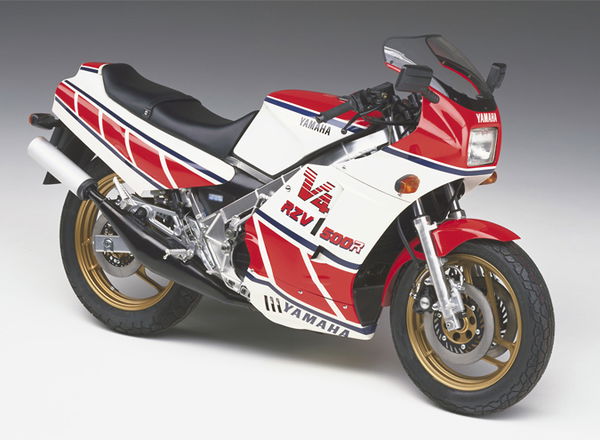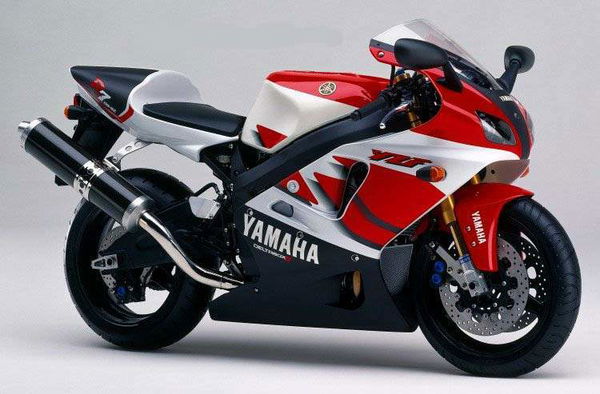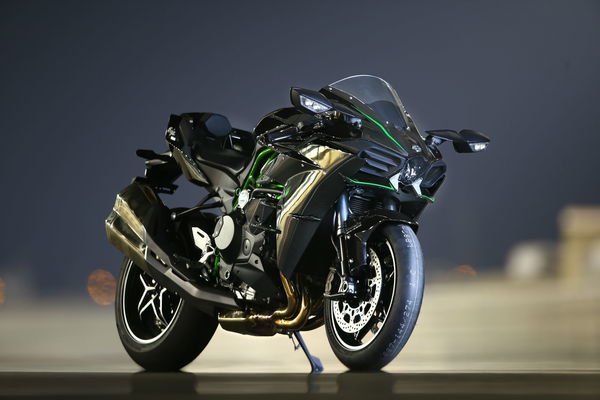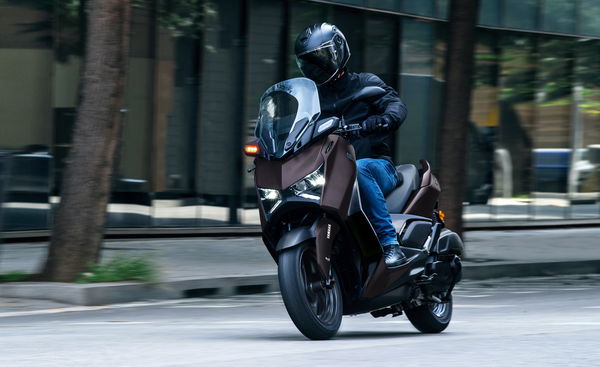Top 10 best ever Yamahas
Yamaha has been churning out bikes since 1955. But which are the best ones?

ONCE again we’re picking our selection of the best bikes from an entire manufacturer’s history. You’ll probably agree with some of them. You’re sure to disagree with others, though, so let us know what you’d choose instead in the comments.
‘Best’ is, of course, a tricky thing to define. Best selling? Best performing? Best looking? Our nebulous criteria is simply defined as bikes that simply towered above their rivals or trod new paths that others would later follow.
So here's out top 10 countdown, starting with...

10: YZF-R7 (OW-02)
There’s no doubt that the R7 is, even today, one of the most desirable things to carry a Yamaha badge. Hugely capable, made in tiny numbers, fabulous to look at, there’s a constant demand that’s pushing prices ever higher. Which is odd, since there have been far more successful homologation specials. Yes, the R7 won races, but it never took a WSB title. Conversely, Honda’s VTR1000SP1 and SP2 also tick the ‘homologation special’ box, have championships to their names, but can be bought for a fraction of the cost of an R7. The R7 was simply born with greatness – it would be a ‘want one’ bike even without its heritage.
We’re talking the original 1200cc V-Max here, not the 1700cc VMAX that would come much later. Why? Because if you were a kid in the early-to-mid 1980s the V-Max was the bike that was spoken of in hushed tones. So powerful that it had to be restricted in UK form. Who cares that its designers placed handling in a distant second place on the priorities list. At a time when 80hp was still seen as loads, a full-power V-Max claimed 145bhp. It’s a legend for that alone. The 1700cc follow-up also hit some power highs, but all too soon far more manoeuvrable superbikes managed to catch up with its 197bhp performance, robbing it of its bragging rights.
These days, the idea of taking a sports bike engine and sticking it into a dual-sports bike is gaining traction. See the Multistrada, the BMW S1000XR and various KTM Adventures for evidence of that. But back in 1988 Yamaha’s decision to stick a TZR250 motor into a high-sitting, semi-off-road machine was pretty radical. It was sort of a take on the scramblers of a bygone era, updated for the modern age and turned up to 11. Now, the fact it’s a twin-cylinder stroker makes it all the more desirable, the whiff of two-stroke oil bringing pangs of nostalgia to anyone old enough to remember when it was a familiar scent on our roads.
From the mid-70s onwards the XT500 was the epitome of the scrambler, effortlessly capturing the style that dozens of modern hipstermobiles struggle to replicate. It also kicked off a dynasty that would ultimately evolve to encompass the XT600Z Tenere, one of the genre-defining, Paris-Dakar-inspired adventure bikes that once again inspired endless mimics and copycats.
In its day the TDM850 was an oddball. Rather like the TDR250, it was a not-quite-off-road, not-quite-on-road, not-quite-a-tourer but not-quite-a-sportsbike mash-up that many saw as falling between too many stools, but was actually rather good. It was basically the same idea as the Multistrada, but a dozen years earlier. The same engine also made its way into the criminally-underrated TRX850, a machine that could have ushered sports bikes down a path towards lightness rather than out-and-out power, if only other firms – and buyers – had taken note. But that’s another story.
READ OUR YAMAHA TDM 850 BUYERS' GUIDE.
We were going to put the seminal RD500 here, Yamaha’s stab at a road-going GP bike of the 1980s, but of course the Japanese market RZV500R is an even better machine. Combining the RD’s engine with an aluminium frame and up-spec’d suspension it was effectively 1984’s equivalent of a Honda RC213V-S. Like the Honda it was disappointingly short of power as standard – 64hp wasn’t much even then – but could easily be upgraded to have performance to match its GP-inspired design.
Always in the shadow of Honda’s all-conquering RC30, the OW-01 was Yamaha’s 1980s race homologation tool, and today it’s nearly as desirable as the Honda that tended to pip it on track. Terrifyingly expensive when new – over £13k when an FZR1000R was under £6k – it was never going to sell in big numbers. Hard to ride, with flat-slide carbs, it wasn’t really aimed at normal buyers; the target audience was race teams and that’s where many of them went, adding to its rarity now.
Is a moped really worthy of third position on this list? Many would say so in the UK, the market it was designed for, and some might even place the Fizzy higher still. For the teenagers it was marketed at, the FS1-E was a superbike, with near-mythical powers to flout the 30mph speed limit introduced for mopeds in 1977. The FS1-E was seen as a guaranteed way to pull the girls (it wasn’t) and endlessly claimed to achieve 55mph or more (it wouldn’t), and that reputation means it’s an icon – at least for a certain generation – even if it can’t actually live up to its own publicity.
Just like the Fizzy, the RD350LC is a bike that managed to create a cult. In the early 80s it was an affordable, high-performance stroker that made it the default option for hooligans everywhere. These days, those hooligans, or even their grown-up, respectable kids, are happy to spend thousands restoring them to nut-and-bolt perfection simply to touch the hem of the legend that has built up around them. Yamaha seems to have the knack of creating bikes with oversized reputations, whether it’s the V-Max, the FS1-E or the RD350LC, but of them all it’s the RD that comes closest to matching its own hype.
If you’re too young to remember the introduction of the 1998 R1, then it’s hard to convey the anticipation that swelled up around it. This was a 1000cc superbike that really did seem to be as small as a 600. In an era when even the famously-lightweight Honda Fireblade was looking like it had eaten a few too many pies, the R1 was a revelation. It was so compact that magazines of the day labelled spy shots as a new generation of YZF750 and still commented on how small it was. When it was revealed to be 998cc, jaws dropped. What’s more, it didn’t just live up to expectations, it exceeded them. Sure, today’s bikes are lighter and faster, but it’s been a gradual evolution to get there. Never since has such a big single step forward been made in the superbike class.
WANT MORE? CLICK HERE TO CHECK OUT OUR TOP 10 NAKED BIKES OF 2017.
CLICK HERE FOR MORE GREAT VISORDOWN TOP TENS.











